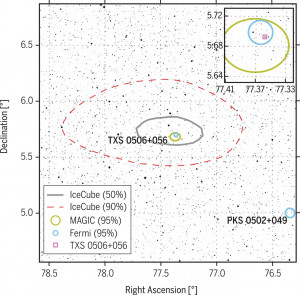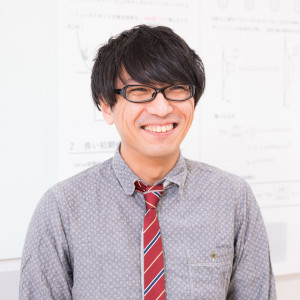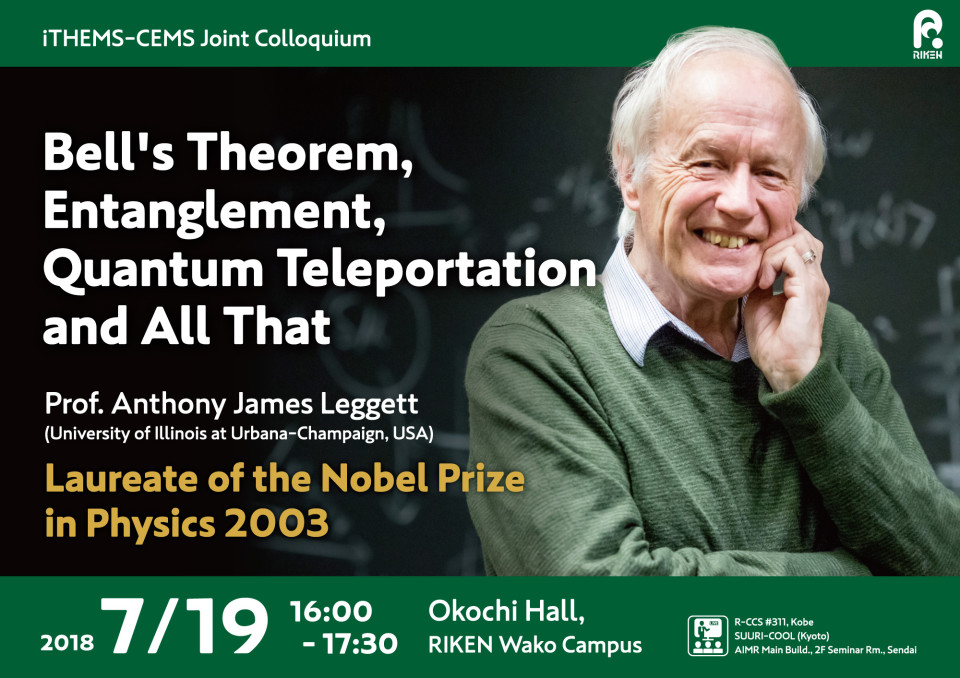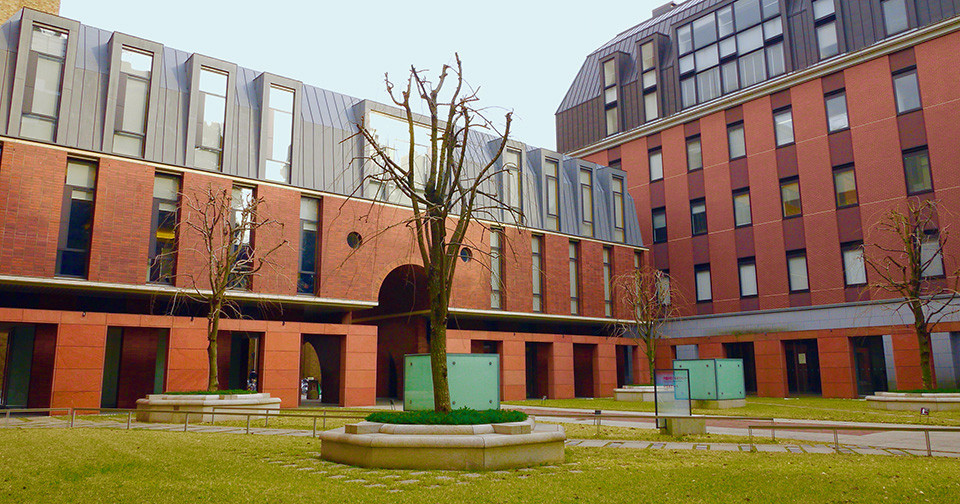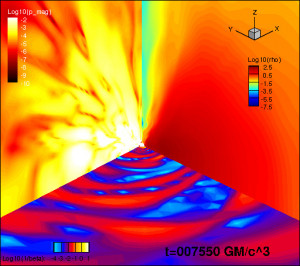Volume 14
Back to Newsletter List
Research News
High-energy neutrinos from a gamma-ray emitting supermassive black hole: the dawn of the electroweak sector of multi-messenger astronomy
2018-07-17
Background:
Since 2010, the IceCube Observatory, utilizing a cubic-km volume of ice in Antartica, has been detecting neutrinos with energies exceeding 100 TeV (~10^13 times the energy of a visible photon), which likely originate from astrophysical sources outside of the Milky Way Galaxy. However, their sources remained unknown, mainly due to the limited accuracy of their localizations in the sky. From 2016, IceCube initiated a new, automated alert program that rapidly identifies significant neutrino candidates and widely disseminates their sky positions, so that telescopes around the world can immediately search for potential counterparts at various wavelengths.
Result:
On September 22, 2017, a neutrino with energy ~300 TeV (dubbed IceCube-170922A) was detected with relatively good sky localization, and was rapidly followed up by numerous telescopes operating across the electromagnetic spectrum. The Fermi-LAT satellite and the MAGIC telescopes identified an object (named TXS 0506+056) shining brightly in gamma-rays (Fig. 1). The object is classified as a “blazar”, a type of supermassive black hole that is actively ejecting “jets" of plasma at relativistic velocities nearly toward us. This is the first time that a likely source of high-energy neutrinos has been identified with reasonable confidence [1]. These results were published in the July 13 issue of Science magazine, in a paper authored by more than 1100 scientits in 16 collaborations, including Susumu Inoue of iTHEMS as a member of the MAGIC Collaboration [2].
Implications:
The production of such high-energy neutrinos requires the acceleration of hadrons (proton or nuclei) to extremely high energies. This implies special physical conditions in the jets from supermassive black holes, and offer valuable clues on the formation mechanism of the jets, which is not well understood. This may also be the first step in solving the long-standing mystery of the origin of ultra-high-energy cosmic rays, the highest energy particles known to exist in the Universe [3]. Finally, it may shed new light on the properties of neutrinos at energies far beyond the capability of terrestrial accelerator facilities.
Prospects:
Following on the heels of GW170817, the binary neutron star merger event discovered in August 2017 in gravitational waves and then identified in electromagnetic waves, this signals the dawn of the “electroweak" sector of multi-messenger astronomy involving neutrinos and photons. Vigorous efforts will continue in the next years, with bright prospects for elucidating the physics of supermassive black holes and their jets, the origin of high-energy neutrinos and cosmic rays, etc.
Figure 1:
Image of the sky at optical wavelengths of the region of interest. Overlayed are the positional uncertainties of the neutrino IceCube-170922A, and those of the blazar TXS 0506+056 at optical wavelengths and in gamma rays observed by Fermi and MAGIC.
References
- NSF Press Conference on Breakthrough in Multi-messenger Astrophysics
- Multimessenger observations of a flaring blazar coincident with high-energy neutrino IceCube-170922A IceCube, Fermi-LAT, MAGIC and other collaborations
- The blazar TXS 0506+056 associated with a high-energy neutrino: insights into extragalactic jets and cosmic ray acceleration MAGIC Collaboration (corresponding authors: Susumu Inoue and 4 others)
Seminar Report
Series of lectures at Komaba Campus, Univ. of Tokyo
2018-07-17
Series of lectures "Frontiers of Mathematical Sciences: Universe, Matter, Life and Information" were at Komaba Campus, Univ. of Tokyo, on every Wed. April-July, 2018, for the 1st and 2nd year undergraduate students in Univ. Tokyo. Six researchers from RIKEN iTHEMS (Y. Inoue, Y. Yokokura, M. Tachikawa, J. Fawcett, T. Doi and M. Taki) gave 14 lectures altogether.
The photo is the very last slide of M. Taki and himself (left) who gave the last lecture on July 11, as well as T. Tsuboi who organized this class. Undergraduate students seem to enjoy these lectures which cover the wide range of topics selected from the point of view of mathematical sciences.
We plan to publish these lectures as a book in the near future.
Upcoming Events
Colloquium
iTHEMS Colloquium
Bell's Theorem, Entanglement, Quantum Teleportation and All That
July 19 (Thu) 16:00 - 17:30, 2018
Anthony James Leggett (Professor, University of Illinois at Urbana-Champaign, USA)
iTHEMS-CEMS Joint Colloquium.
Professor Leggett is widely recognized as a world leader in the theory of low-temperature physics, and his pioneering work on superfluidity was recognized by the 2003 Nobel Prize in Physics.
Abstract:
One of the most surprising aspects of quantum mechanics is that under certain circumstances it does not allow individual physical systems, even when isolated, to possess properties in their own right. This feature, first clearly appreciated by John Bell in 1964, has over the last half-century been tested experimentally and found (in most people's opinion) to be spectacularly confirmed. More recently it has been realized that it permits various operations which are classically impossible, such as "teleportation" and secure-in-principle cryptography.
This talk is a very basic introduction to the subject, which requires only elementary quantum mechanics.
Venue: Okochi Hall, 1F Laser Science Laboratory, RIKEN
Broadcast: #311, Computational Science Research Building, R-CCS, Kobe Campus, RIKEN / SUURI-COOL (Kyoto), Room 204-205, 2F Maskawa Building for Education and Research, North Campus, Kyoto University / 2F Seminar Room, AIMR Main Building, Advanced Institute for Materials Research (AIMR), Tohoku University
Event Official Language: English
Seminar
Number Theory Seminar
Number Theory Seminar: 3 Talks
July 24 (Tue) 10:00 - 12:35, 2018
Masataka Ono (Keio University)
Shingo Sugiyama (Nihon University)
Yoshinosuke Hirakawa (Keio University)
This seminar is aimed at scientists in general, not only to mathematicians.
10:00-10:45
Title: Multiple zeta functions associated with 2-colored rooted trees
Speaker: Dr. Masataka Ono (Keio University)
Abstract: In our recent work, we introduced a combinatorial object and finite sum associated with them which we call finite multiple zeta values associated with 2-colored rooted trees and gave a unified interpretation to some types of finite multiple zeta values. In this talk, we introduce multiple zeta function associated with 2-colored rooted tree and discuss its analytic properties, for example, the possible singularities and functional equations.
10:55-11:40
Title: Modular forms and trace formulas with applications to equidistributions of their Fourier coefficients
Speaker: Dr. Shingo Sugiyama (Nihon University)
Abstract: Modular forms are interesting objects in number theory as they are related to arithmetic problems. Trace formulas of Hecke operators acting on modular forms are very useful tools to study arithmetic invariants: Fourier coefficients, special values of L-functions, Hurwitz class numbers. We will start fundamental notions on modular forms and trace formulas of Hecke operators for non-experts, and introduce our results on a generalization of Serre’s vertical Sato-Tate law. Some results in this talk are based on a joint work with Masao Tsuzuki (Sophia University).
11:50-12:35
Title: On a generalization of Dobinski's formula
Speaker: Yoshinosuke Hirakawa (Keio University)
Abstract: Dobinski's formula is a very classical formula, which expresses the Bell number as an infinite series. Here, the Bell number is the number of partitions of a finite set. Such a "combinatorial-analytic" formula should lead us to more beautiful number theory. In this talk, we introduce a generalization of Dobinski's formula by means of a certain multiple generalization of the exponential function.
Venue: Seminar Room #160, 1F Main Research Building, RIKEN
Event Official Language: English
Conference
Supported by iTHEMS
International Symposium on Quantum Fluids and Solids (QFS)
July 25 (Wed) - 31 (Tue) 2018
The International Symposium on Quantum Fluids and Solids (QFS) will be held at Ito International Research Center (IIRC) on Hongo campus of the University of Tokyo, Japan, from July 25 through 31, 2018. One of the sponsors of this conference is iTHEMS.
The QFS series started forty-three years ago making it one of the oldest series of international conferences in the field of low temperature physics. It has historically been focusing on physics of liquid and solid helium and hydrogen. But in this century its scope is expanding widely from laser cooled cold atoms to topological matters. At QFS2018 in Tokyo, this trend will be continued and with even more interdisciplinary aspects emphasized between the traditional subjects and those in broader physical systems.
Venue: Ito International Research Center (IIRC), Hongo Campus, The University of Tokyo
Event Official Language: English
Featured Paper of the Week
Production of intense episodic Alfvén pulses: GRMHD simulation of black hole accretion disks
2018-07-17
The episodic dynamics of the magnetic eruption of spinning black hole (BH) accretion discs and the associated intense shape-up of their jets are studied via three-dimensional general-relativistic magnetohydrodynamics (GRMHD). The embedded magnetic fields in the disc are amplified by a magnetorotational instability (MRI) so large as to cause an eruption of the magnetic field (reconnection) and large chunks of matter accrete episodically toward the roots of the jets upon such an event. We also find that the eruption events produce intensive Alfvén pulses, which propagate through the jets. After the eruption, the disc returns to the weakly magnetic state. Such disc activities cause short-time variabilities in mass accretion rate at the event horizon, as well as electromagnetic luminosity inside the jet. Since the dimensionless strength parameter a0 = eE/m_eωc of these Alfvén wave pulses is extremely high for a substantial fraction of Eddington accretion rate accretion flows on to supermassive black holes, the Alfvén shocks turn into ultrarelativistic (a0 >> 1) bow wake acceleration, manifesting as ultra-high-energy cosmic rays and electrons, which finally emit gamma-rays. Since our GRMHD model has universality in its spatial and temporal scales, it is applicable to a wide range of astrophysical objects, ranging from active galactic nuclei (AGNs, the primary target of this research) to micro-quasars. Properties such as the time variabilities of blazar gamma-ray flares and the spectrum observed by the Fermi Gamma-ray Observatory are explained well by linear acceleration of electrons by a bow wake.
Figure caption:
A snap shot of accreting gas onto a spinning black hole and Poynting flux dominated jet formation by 3-dimensional general relativistic magneto-hydrodynamic simulation. Log-scaled inverse of plasma beta (magnetic pressure / thermal pressure) (x-y plane), mass density (y-z plane), and magnetic pressure (x-z plane) are shown.
Reference:
Akira Mizuta, Toshikazu Ebisuzaki, Toshiki Tajima, Shigehiro Nagataki
"Production of intense episodic Alfvén pulses: GRMHD simulation of black hole accretion disks"
MNRAS 479, 2534 (2018)
doi: 10.1093/mnras/sty1453
arXiv: 1707.08799
If you would like to cancel your subscription or change your email address,
please let us know via our contact form.
Copyright © iTHEMS, RIKEN. All rights reserved.


